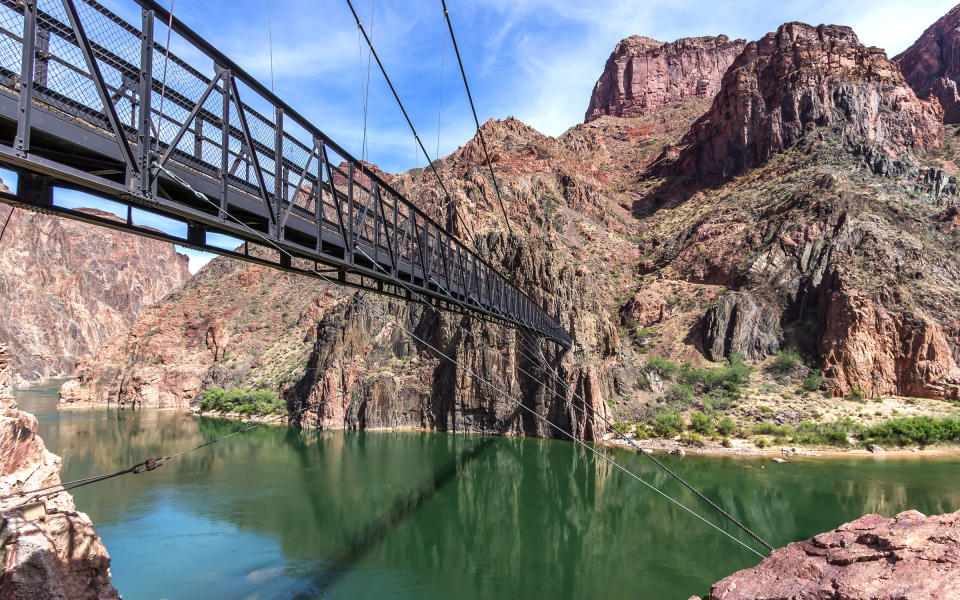Unique Facts About the Grand Canyon
History of Grand Canyon
When you’re standing 4,000 feet over the rim of America’s most recognizable geological wonder—a 2 billion-year-old gorge eroded slowly by wind and water—the first thing you might ponder is: how? How is it possible that a canyon this deep, with its intricately carved layers and sculpted waterways, ever came to be? Yet a more practical question might be, how was it first perceived? After all, it didn’t always play the role of national landmark, home to 5 million visitors each year. In fact, Grand Canyon National Park, as we know it, is a relatively new concept, having officially been declared a national park in 1919.
Related: Secrets of the Hollywood Sign
It was during the Paleo-Indian Period, some 12,000 years ago (just a blip in the wider history of the canyon itself), that humans first set foot here. Over the Grand Canyon’s evolution, it has been home—and sacred ground—to many Native American tribes, like the Navajo, Hopi, and Havasupai.
Related: Six Secrets of Big Ben

Grand Canyon Facts
The Huvasupai in particular pioneered many of the walking trails and settlements we use today. One of them, the Indian Garden campground, has become a treasured spot for backpackers and other travelers who wish to escape the main tourist spots. Located just under 5 miles from the South Rim, Indian Garden is one of the smallest (and hence, quietest and most peaceful) of all the Grand Canyon’s camping areas: you won’t find huge busloads of tourists here, because with just 15 campsites, there’s simply no room.
Related: Secrets of Buckingham Palace
In addition to spectacular sunsets, the main appeal of sleeping at the bottom of the Grand Canyon is access. Being able to rise with the sun, already immersed in the raw beauty of this landscape—with its rushing creeks, towering cacti, blazing hot boulders, and tiptoeing elk—is an experience many day hikers simply miss out on.
Related: Secrets of the Lincoln Memorial
Of course, rangers won’t allow anyone to stay overnight without a camping permit; these can be obtained from the Grand Canyon National Park information center, and are offered on a first-come, first-serve basis.
Related: Secrets of Dubai's Burj Khalifa
From Indian Garden, it’s a wild, incredibly scenic 5-mile hike to Phantom Ranch, known as the lowest point of the Grand Canyon. And this is where spending a full two days, or two weeks—some opt to camp out for weeks at a time—comes in handy. Fully rested after a night under the stars, travelers can get a head start on their hike across the Bright Angel Trail, which leads to Phantom Ranch. The “core of the canyon,” as it’s sometimes called, sits right beside Bright Angel Creek, a lush oasis where sun-blasted hikers can soak their feet and wash away the sweat after the 4-hour trek.

